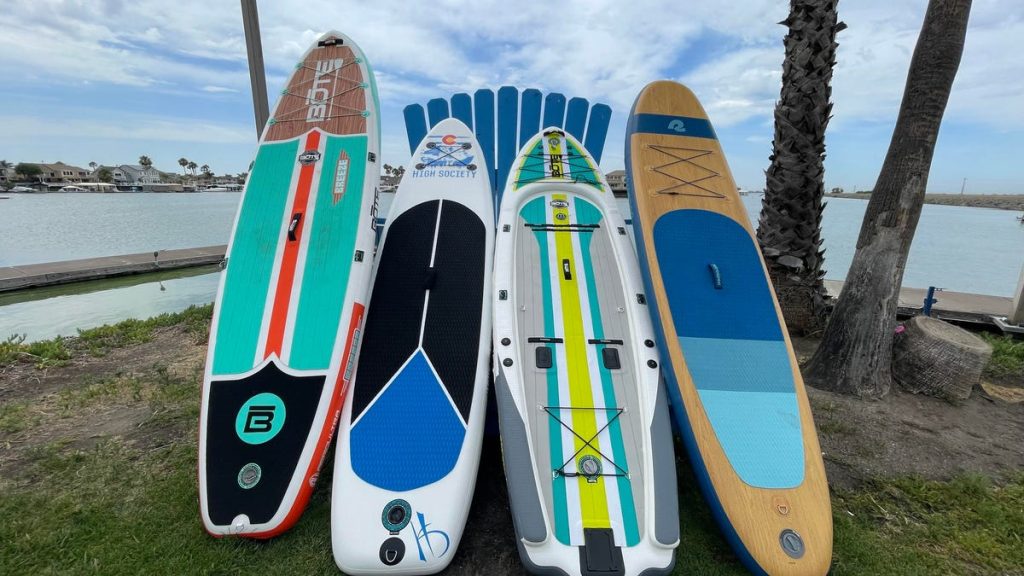Choosing the right paddleboard hinges on several factors, including usage, storage capabilities, and budget. Essentially, the decision boils down to two primary types: solid (rigid) and inflatable. While both offer distinct advantages, neither is inherently superior. Solid boards are generally preferred for ocean paddling due to their enhanced durability and stability in challenging conditions, such as choppy waters, boat wakes, and waves. Their robust construction allows them to withstand impacts from rocks and reefs, making them ideal for navigating unpredictable environments. However, their rigidity also poses storage and transportation challenges, especially for those living in smaller spaces or lacking suitable vehicle transport options.
Inflatable paddleboards, conversely, excel in portability and storage. They can be easily deflated and packed away, making them a practical choice for apartment dwellers or individuals with limited storage space. Transporting an inflatable board is considerably easier than a solid one, eliminating the need for roof racks or bulky transport solutions. While inflatable boards have improved significantly in terms of performance, they may not offer the same level of rigidity and responsiveness as solid boards, particularly in demanding conditions.
Paddleboard design also caters to specific activities, offering specialized features to enhance performance. Touring boards, characterized by their length and pointed noses, prioritize speed and efficiency for long-distance paddling on flat or choppy water. Racing boards, built for maximum velocity, are typically long, narrow, and highly maneuverable, often commanding a higher price point. Yoga boards provide enhanced stability with a wider deck and expansive footpad, creating a stable platform for practicing poses on the water. Similarly, fishing boards emphasize stability and often feature a recessed deck for a lower center of gravity, along with numerous D-rings for attaching fishing gear. Multi-person boards accommodate multiple paddlers with their increased length and width, while leisure boards offer a balanced combination of speed, stability, and maneuverability for recreational paddling.
Budget considerations play a significant role in paddleboard selection. Inflatable boards generally offer a more affordable entry point compared to their solid counterparts. Performance-oriented boards, particularly racing models, tend to occupy the higher end of the price spectrum. A decent quality paddleboard can be found within a price range of $300 to $2000+, with prices varying based on construction, features, and brand.
Storage space is a crucial factor to consider, especially when opting for a solid paddleboard. Their size and rigidity can present storage challenges, particularly in smaller living spaces. Wall mounts or dedicated storage racks may be necessary to accommodate a solid board. Failing to anticipate storage needs can lead to inconvenient and cumbersome arrangements.
Before investing in a paddleboard, carefully assess your individual needs and circumstances. Consider your intended paddling environment, frequency of use, storage capabilities, and budget. Choosing between a solid or inflatable board depends on prioritizing durability and performance versus portability and storage convenience. Researching different board types and their specific features will help you make an informed decision and select the paddleboard that best aligns with your paddling goals and lifestyle. Don’t overlook the importance of storage space for solid boards to avoid future inconvenience. Ultimately, the right paddleboard will enhance your enjoyment of this popular water sport.

